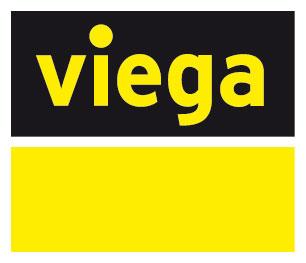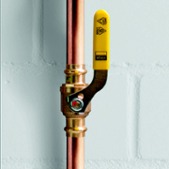Identification letters on PEX can be confusing, particularly when it comes to selecting tubing. Here, we’ll give you a rundown on all things PEX and how to make the right choice for every job.
Most Common Types of PEX
The term “PEX” is often in reference to one of its three most common types: PEX-a, PEX-b and PEX-c. These letters are used to identify different manufacturing processes and have nothing to do with quality or performance. All types of PEX must meet the same minimum standards for pressure and temperature ratings, bending radius and pipe wall thickness, and ID/OD dimensions. Also, all types have to comply with the same ASTM F876 and ASTM F877 standards and SDR9 dimensional standards.
Of course, that doesn’t mean all types of PEX are identical. Each has its own characteristics. All PEX is a polyethylene material that has undergone a change in molecular structure using a chemical or physical process to link the polymer chains. Cross-link bridges create cross-linking, which can use a Carbon, Silicon and Oxygen chain to create the bridge. These bridges are made by breaking and reforming long polymer chains.
Cross-linking of polyethylene improves a variety of traditional PEX properties. The thermal benefits include resistance to temperature, aging, and low-temperature impact. Among the mechanical benefits you’ll find tensile strength, modulus, abrasion resistance, pressure rating, and creep resistance. Cross-linking also changes PEX flexibility and improves stress crack resistance.
Different types of PEX are engineered to perform in a variety of jobsite conditions. If you’re interested in learning more about different types of PEX tubing designation codes, read here.
Flexibility
Due to the cross-linking process, all PEX is less flexible than its parent material, Polyethylene. But this trade-off occurs to produce all other benefits. Viega PureFlow has a supported bend radius of 5x the outside diameter and an unsupported bend radius of 8x the outside diameter. PEX-a is limited to 6x outside diameter, meaning PureFlow can turn tighter, prevent the use of more fittings, and improve pressure loss in the system.
What is PEX-a?
PEX-a is created by introducing peroxide into the HDPE before it’s extruded. Per the ASTM Standard F876, PEX-a must be cross-linked to a higher level in order to meet the standard for burst pressure requirements.
What is PEX-b?
PEX-b, like Viega PureFlow, is created through the silane process, which is done which is done during the extrusion process with a catalyst under high humidity and temperature. Per the ASTM standard F876, PEX-b must be crosslinked to at least 65% to meet the standard for burst pressure.
What is PEX-c?
PEX-c achieves cross-linking through electron beam irradiation. Per the ASTM standard F876, PEX-c must be cross-linked to at least 65% to meet the standard for burst pressure. PEX-c can be prone to cracks and kinking if not well controlled during manufacturing.









